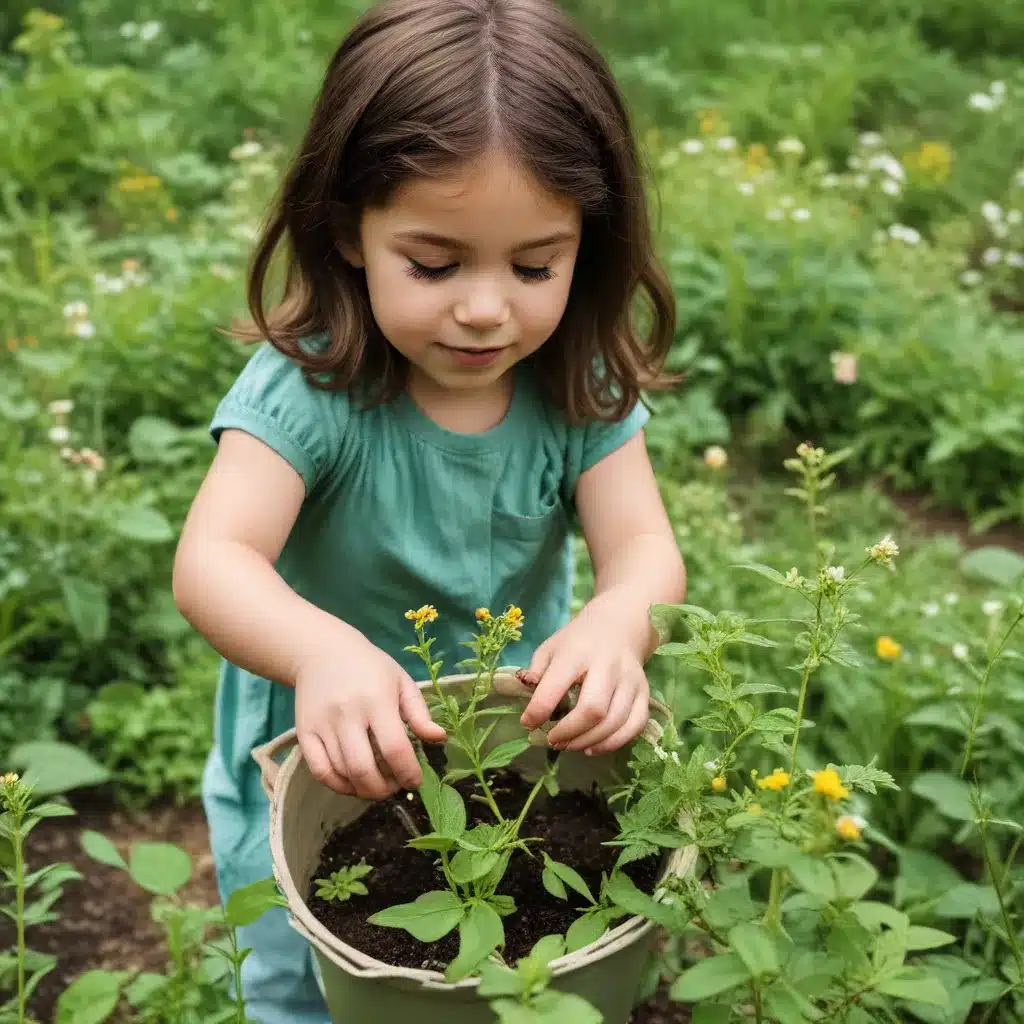
Budding Botanists: Pollinator-Friendly Plant Projects for Young Green Thumbs
Watching the vibrant blooms of your garden burst forth, drawing in a flutter of eager pollinators, is one of the true joys of gardening. As an educator at Crooked Pines Farm, I’m passionate about nurturing the next generation of budding botanists and instilling a lifelong love for nature’s wonders. In this comprehensive guide, we’ll explore engaging, pollinator-friendly plant projects that will captivate your young green thumbs and foster a deep appreciation for the delicate balance of our ecosystems.
Understanding Pollinator Needs
Pollinators, such as bees, butterflies, moths, and hummingbirds, play a crucial role in the health and productivity of our gardens. By transferring pollen from plant to plant, they enable the development of fruits and seeds, ensuring the continued propagation of our beloved flora. However, these vital creatures face numerous threats, including habitat loss, pesticide use, and climate change. By creating pollinator-friendly gardens, we can do our part to support these hardworking allies and ensure a bountiful future.
When selecting plants for your young gardeners, look for species that are rich in nectar and pollen, the primary food sources for pollinators. Native plants, in particular, are well-suited to local pollinators and often require less maintenance than exotic varieties. Consider incorporating a diverse array of flowering plants that bloom at different times throughout the season, ensuring a continuous source of sustenance for your winged visitors.
Selecting Pollinator-Friendly Plants
Begin by exploring the wealth of native plant options available in your region. These species have evolved alongside local pollinators, forming symbiotic relationships that are vital to the ecosystem. For example, the cheerful black-eyed Susan (Rudbeckia hirta) is a favorite of many pollinator species in the eastern United States, while the vibrant penstemon (Penstemon spp.) attracts hummingbirds in the western states.
Encourage your young gardeners to research and select plants that will bloom at different times of the year, creating a seasonal display that supports pollinators throughout their active periods. Spring-blooming lilacs (Syringa spp.) and fall-flowering asters (Symphyotrichum spp.) are just a few examples of plants that can extend the pollinator-friendly season.
When designing your pollinator garden, consider the layout and planting density. Grouping plants of the same species together in larger swaths can make it easier for pollinators to locate and visit the flowers. Incorporate a variety of plant heights, from low-growing groundcovers to towering sunflowers (Helianthus annuus), to create a visually appealing and functional habitat.
Engaging Young Gardeners
Gardening with children can be a rewarding and educational experience, fostering a lifelong appreciation for the natural world. Engage your young botanists with hands-on activities that allow them to explore the fascinating life cycles and adaptations of pollinators.
Begin by guiding them through the process of seed starting and plant propagation. Watch in wonder as they witness the miraculous transformation from tiny seed to thriving seedling. Teach them about the importance of transplanting and hardening off to ensure the health and resilience of their plants.
Encourage your budding botanists to create pollinator-friendly container gardens, selecting a variety of colorful, nectar-rich plants that can be tended to in small spaces. Discuss the unique watering and maintenance needs of these portable habitats, emphasizing the importance of sustainability.
For a more immersive experience, help your young gardeners establish a pollinator habitat in your garden or a designated community space. Incorporate diverse native plants, provide shelter and water sources, and observe the array of pollinators that visit. Encourage them to keep a nature journal, sketching the various insects and birds they encounter, and to participate in citizen science initiatives that track pollinator populations.
Pollinator Observation and Monitoring
Engaging your young gardeners in the art of pollinator identification and monitoring can deepen their understanding of the intricate web of life in your garden. Provide field guides or online resources that help them recognize common pollinators, such as the iconic monarch butterfly, the industrious honey bee, and the iridescent hummingbird.
Encourage your young botanists to become citizen scientists by participating in programs that track pollinator activity. Organizations like the Xerces Society and the North American Butterfly Association offer opportunities for individuals to contribute valuable data on pollinator populations, which can inform conservation efforts.
Sustainable Gardening Practices
As budding botanists, your young gardeners will be inheriting a world that faces growing environmental challenges. Empower them to adopt sustainable gardening practices that support pollinators and promote the health of our shared ecosystems.
Teach them about organic pest management techniques, emphasizing the role of beneficial insects and natural control methods. Discuss the harmful impacts of synthetic pesticides and herbicides, and explore alternatives that protect pollinators and other wildlife.
Introduce water conservation strategies, such as drought-tolerant plant selection and efficient irrigation methods. Demonstrate the benefits of rainwater harvesting and mulching to retain moisture in the soil, reducing the need for excessive watering.
By incorporating these sustainable practices into your gardening routines, you’ll not only create a thriving pollinator habitat but also instill a deep respect for the environment in your young green thumbs. As they grow, they’ll be equipped with the knowledge and skills to become responsible stewards of the land, ensuring a flourishing future for both people and pollinators.
Gardening with children is a truly rewarding experience, allowing you to nurture their curiosity, foster their connection to nature, and inspire them to become the next generation of budding botanists. By focusing on pollinator-friendly plants, hands-on activities, and sustainable practices, you’ll cultivate a lifelong appreciation for the delicate balance of our ecosystems and the essential role of pollinators in maintaining their health. So, grab your gardening gloves, gather your young apprentices, and let’s embark on an adventure that will bloom into a lifetime of wonder and discovery. Remember, the seeds you plant today will grow into a future of vibrant, pollinator-friendly gardens that will continue to inspire and delight for years to come.


